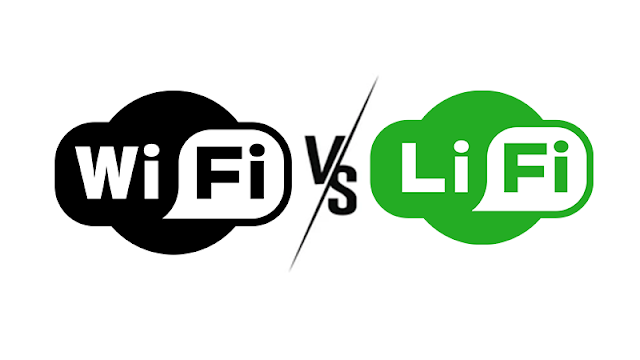Wi-Fi and Li-Fi are two different technologies that provide wireless internet connectivity, but they use different methods to transmit data. Here's a comparison between Wi-Fi and Li-Fi:
Transmission Technology:
- Wi-Fi: Wi-Fi, short for Wireless Fidelity, uses radio waves to transmit data over the air. The Wi-Fi router sends signals to Wi-Fi-enabled devices like smartphones, laptops, and smart TVs.
- Li-Fi: Li-Fi, short for Light Fidelity, uses light waves, specifically the visible light spectrum, to transmit data. It utilizes LED light bulbs that flicker at extremely high speeds to carry data and requires a Li-Fi receiver on the device to decode the signals.
Speed:
- Li-Fi: Li-Fi has the potential to be significantly faster than Wi-Fi. The light waves used in Li-Fi can flicker at extremely high speeds, allowing for data transmission rates in the gigabits per second (Gbps) range.
- Wi-Fi: Wi-Fi speeds can vary depending on the Wi-Fi standard (e.g., 802.11ac, 802.11ax). The latest Wi-Fi standards can provide speeds of several hundred megabits per second (Mbps) to over a gigabit per second.
Range:
- Wi-Fi: Wi-Fi typically has a longer range compared to Li-Fi. Wi-Fi signals can travel through walls and obstacles, providing coverage in a larger area.
- Li-Fi: Li-Fi has a limited range since it relies on visible light. The signals cannot pass through walls, so the coverage area is confined to the room where the Li-Fi bulbs are installed.
Interference:
- Wi-Fi: Wi-Fi signals can experience interference from other electronic devices or neighboring Wi-Fi networks operating on the same or overlapping channels.
- Li-Fi: Li-Fi is less prone to interference from other devices since it uses light waves, and light does not interfere with radio frequencies.
Security:
- Wi-Fi: Wi-Fi networks can be secured using encryption protocols like WPA2 or WPA3 to protect data from unauthorized access.
- Li-Fi: Li-Fi can offer enhanced security since light waves do not pass through walls, making it more difficult for unauthorized users to access the network.
Practical Applications:
- Wi-Fi: Wi-Fi is widely used for wireless internet access in homes, offices, public spaces, and more. It is well-suited for scenarios requiring broader coverage and longer ranges.
- Li-Fi: Li-Fi's high-speed capabilities make it suitable for specific applications like providing internet access in highly dense environments, data transfer in secure environments, and indoor positioning systems.
In summary, Wi-Fi and Li-Fi have their respective strengths and applications. Wi-Fi is prevalent and offers broader coverage, while Li-Fi has the potential for faster data speeds and improved security, particularly in specific use cases. The choice between Wi-Fi and Li-Fi depends on the specific requirements and limitations of the environment in which they are deployed.
|
WiFi |
LiFi |
|
Wireless Fidility |
Light Fidility |
|
54-250 Mbps Speed |
1-3.5 Gbps |
|
20-100 Meter range |
10 meter range |
|
Point to multipoint |
Point to point |
|
2.4 GHZ |
100 times of tera HZ |
|
801.11b IEEE Standard |
802.15.17 IEEE Standard |


